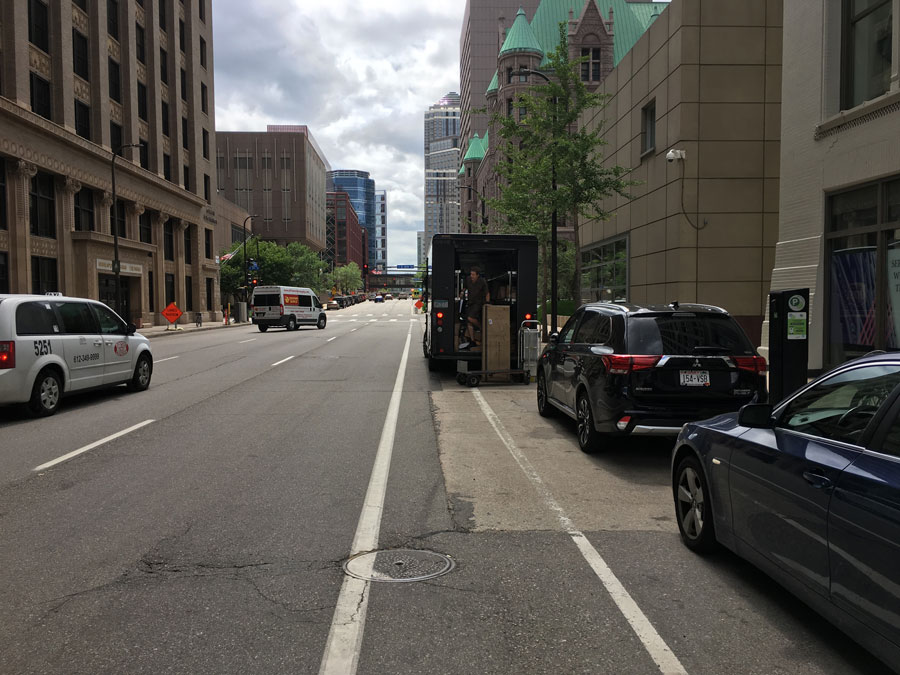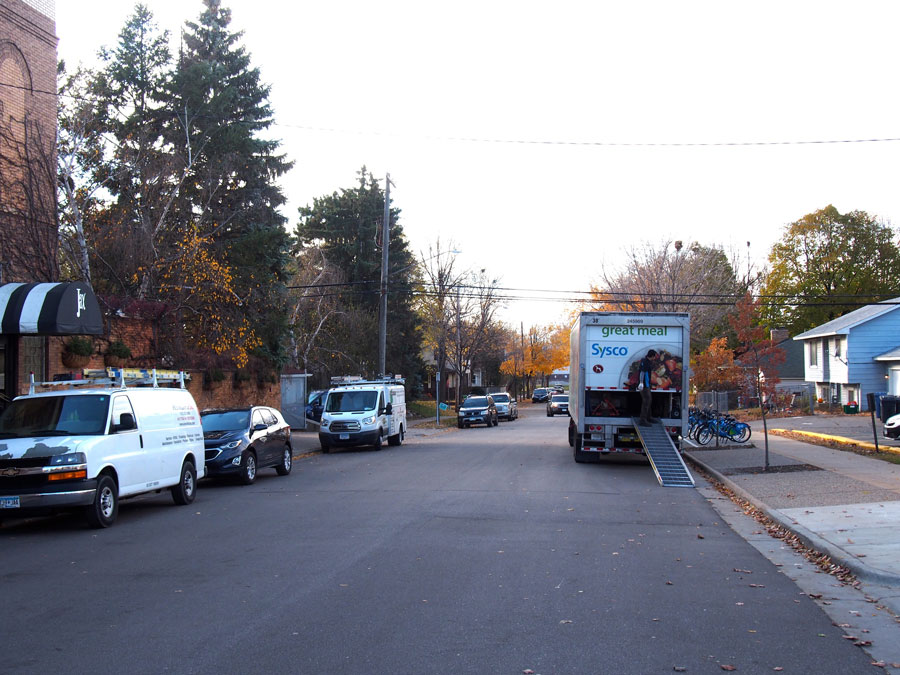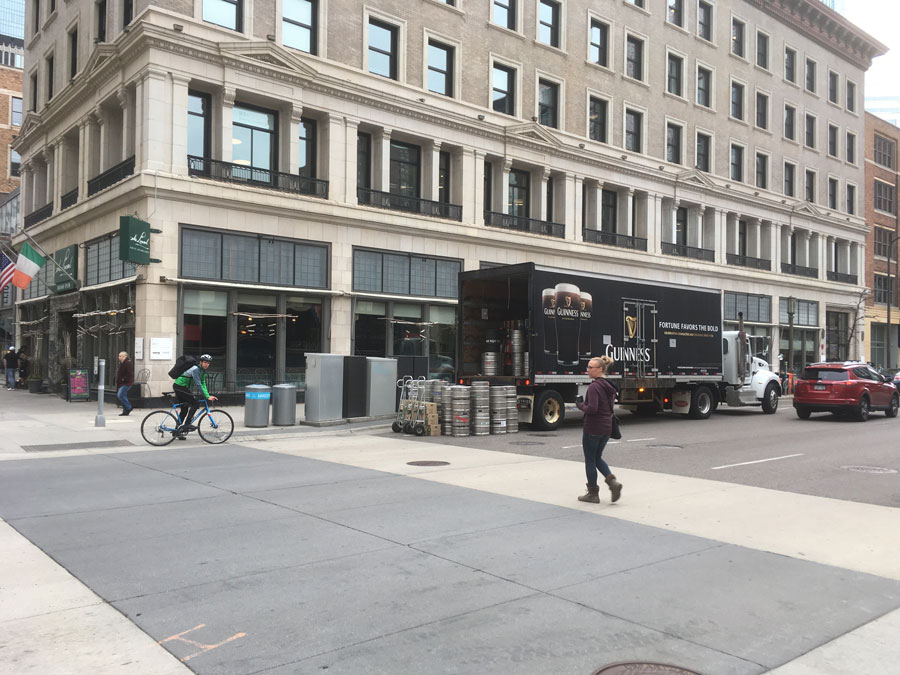Strategy 2 Improve the safety and efficiency of freight movements and integrate freight into the Complete Streets framework.
The actions within this strategy are divided into two categories:
Action we will DOActions we will SUPPORTAction we will do are followed by “DO” and are colored in dark gray, and actions we will support are followed by “SUPPORT” and are colored in light gray.
Learn more about how we get thereThe City’s Vision Zero Crash Study and subsequent analysis reviewed crashes that involved trucks between 2007 and September 2019. Data indicates that large trucks were involved in approximately 3.5% of severe and fatal crashes.1 This strategy focuses on how we can more thoughtfully incorporate safety considerations into the systems that deliver goods throughout the city – through the planning and design of streets and better data collection. Through better data collection we can understand where and how often trucks of different sizes are using the system, so we can better accommodate and design appropriately along those streets as well as streets where there is not as much truck traffic. Understanding curbside space needs for loading and unloading goods and ensuring truck-related crashes on our system are well documented is an important action in pursuit of safe freight movements.
Several actions in this strategy focus on freight safety related concerns we heard through engagement for the TAP, specifically around carrying hazardous goods through the city. Currently, there are more than a dozen freight rail corridors that travel through the city. To date, there have been no crashes related to these corridors that have involved a car; data for crashes involving pedestrians or bicyclists is not available.
- Minneapolis Public Works.
Actions to improve the safety and efficiency of freight movements and integrate freight into the Complete Streets framework.
Freight 2.1
Add a section to the City’s Complete Streets Checklist regarding truck volumes and on-street loading data to evaluate and incorporate freight needs into street design process, without jeopardizing the safety and comfort of people walking, biking and taking transit.
Supported goals:
Safety
Related actions:
Operations 1.1
Difficulty:
Medium
Timeframe:
2020-2023 (Years 0-3)
Freight 2.2
In instances when the Truck Route Network overlaps with the All Ages and Abilities Network, the Street Design Guidance should focus on providing physical separation of the bikeway.
Supported goals:
Safety Mobility
Related actions:
Bicycles 1.3, Design 1.1, Design 1.2, Design 1.3, Design 1.4, Design 1.5, Design 1.6, Design 1.7
Difficulty:
Low
Timeframe:
2020-2023 (Years 0-3)
Status:
On-going
Freight 2.3
Incorporate a data traffic count collection effort to gain insight into the volume of vehicle and non-vehicle freight activity occurring within the city; include commercial vehicles and classification by type.
Supported goals:
Safety Mobility
Related actions:
Difficulty:
Medium
Timeframe:
2024-2027 (Years 4-7)
Freight 2.4
Advocate for revisions to Municipal State Aid rules (Sections 9936, 9941, 9946, 9951 in Chapter 8820) to allow greater flexibility for State Aid Cities to use smaller design vehicles in the designs of streets on the State Aid system.
Supported goals:
Safety
Related actions:
Design 6.2
Difficulty:
Medium
Timeframe:
2024-2027 (Years 4-7)
Freight 2.5
Collaborate with the Minnesota Department of Transportation Rail Safety and Coordination Office to review freight rail risk factors data and crash data for all modes to identify rail grade crossing locations to improve.
Supported goals:
Safety Active Partnerships
Related actions:
Difficulty:
Medium
Timeframe:
2024-2027 (Years 4-7)


